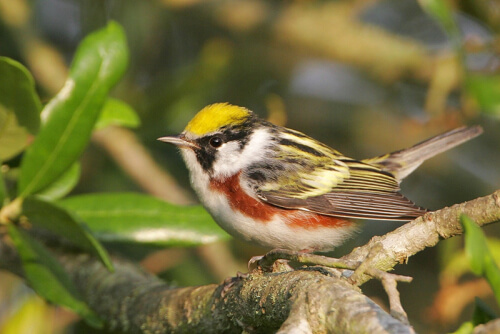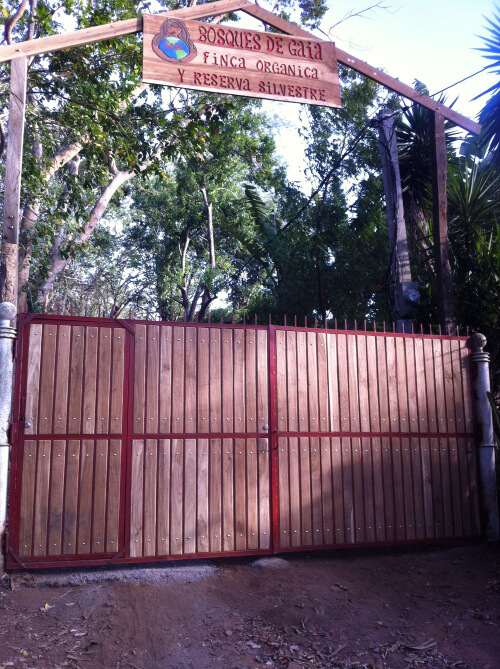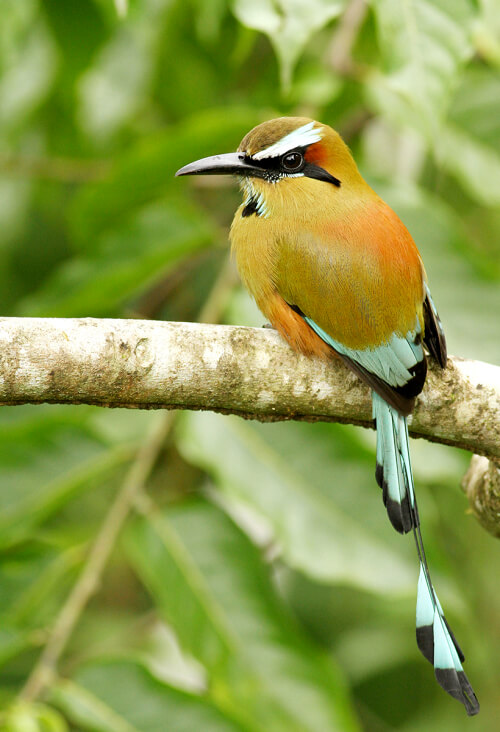Does Bird Friendly Coffee Matter? A Farmer's Perspective

Chestnut-sided Warbler, one of many migratory species that overwinters on Central American shade coffee farms. Photo by Greg Lavaty.
By Jefferson Shriver
"Bird Friendly®" coffee's very name makes it obvious that there are clear benefits for the birds and bird habitat. At Gaia Estate—a medium-sized family farm in Nicaragua that my wife and I own—we grow Bird Friendly coffee, and the birds are plentiful.
In addition to year-round residents like Turquoise-browed Motmot and Collared Aracari, we see many migrants. Baltimore Orioles, Summer Tanagers, Ruby-throated Hummingbirds, and Yellow and Chestnut-sided warblers are just a few of the birds we welcome back each year. In fact, upward of 125 species of birds have been observed on the farm.
But how about the farmer? Is there a clear business and livelihood case for farmers to adopt the Bird Friendly farming approach?

Entrance to Gaia Estate, a family farm in Nicaragua where Bird Friendly coffee is grown. Photo courtesy Jefferson Shriver.
A Century of Traditional Farming
At Gaia Estate, coffee has been grown in a “three-story” shade system for over 130 years. Here, the underbrush of a forest was cleared and most of the trees kept, leaving more than 70 species of trees in place and a very tall canopy.
Growing coffee in a shaded, agroforestry system like this used to be the norm in Nicaragua and in most of the country. The broader landscape was a tapestry of rustic shade-grown coffee farms very similar to what we have at Gaia today. Varieties of Arabica coffee such as Bourbon and Tipica, which were originally found in the forests and love the shade, were grown for a consistent cash income.
But coffee was never the whole story. Farmers also intercropped hardwoods, fruit trees, and semi-perennial crops such as bananas, roots, and tubers that provided them with food, fodder, and lumber when they needed it. They also knew that a three-story shade system would provide a blanket of leaf litter and root systems to protect their soil from erosion and lock in moisture during dry periods; that it would provide wind and rain breaks to shield coffee from extreme weather; and that it would keep the water springs and streams running through their farms vibrant and clean.
A Walk in the Forest
Despite a changing rural landscape and coffee industry, we continue to conserve this tradition today at Gaia. Our tangerine harvest comes in March, avocados in June, and limes, coconuts, and banana harvests year-round. Organically raised chickens run amuck on the farm and provide a weekly supply of eggs, and fallen trees provide lumber for construction. We grow cinnamon, clove, guava, soursop, wild-grown chile pepper, and cilantro—all amidst the coffee. Vanilla, a shade-loving climbing orchid that winds its way up and around trees, is on its way to becoming a primary new cash crop on the farm.

Vanilla, a shade-loving climbing orchid, is a new cash crop on the farm. Photo by Jefferson Shriver.
We selectively hand weed instead of using herbicides, leaving a new generation of tree seedlings spread by bats and birds to grow and eventually replace the elder giants. Instead of highly toxic pesticides, we use certain species of trees and plants on the farm to combat pests. We use manures, coffee residues, and nitrogen-fixing, leaf-shedding trees instead of synthetic fertilizers to keep our top soil healthy and crops fertilized. The permanent and temporary farm workers we employ at different times of the year enjoy a shaded, toxin-free environment.
Time and again, those who visit Gaia consider their experience to be more of a walk in a forest than a farm, and always comment about the high volume of butterflies, ants, and lizards they see compared to other farms, to say nothing of the birds.
Buffer against Changing Conditions
Bird Friendly production systems are also a major buffer to one of the most serious threats coffee farmers have ever faced: changing growing conditions. Arabica coffee is a rain-fed crop and extremely sensitive to just the right kind of growing conditions: consistently cool average temperatures (particularly night temperatures), plenty of rain that is distributed fairly evenly (no extended drought), no extreme winds, and the right shade-to-sun ratio.
Sadly, the planet is not providing these types of conditions for farmers the way it used to. As an agriculture advisor in the developing world for the past 16 years, I have had countless conversations with coffee farmers living along the equator.
What they are experiencing, similar to what we are seeing at Gaia, are longer dry seasons, stronger winds, stronger rains, unpredictable rainy seasons, and warmer average temperatures. These factors are causing flowering to become irregular and pests and diseases to migrate. Plantations are dying or barely productive. When the weather changes like this, coffee becomes more difficult to grow and is less viable to a farmer.
Counting More than Beans
Today there are powerful voices and economic forces in most coffee-producing countries that promote a chemically intensive, shadeless, monocrop system with the promise of higher yields per hectare. I will be the first one to say that over the short term, these systems will out-produce the traditional shade grown system if it is only beans we are counting.
But if we look at benefits beyond coffee yield to include the multiple outputs of a shade-grown, intercropped system, the Bird Friendly alternative remains an attractive one to small- and medium-sized farmers. Finding a price premium for their coffee in a Bird Friendly-certified market provides a true tipping point to maintain these systems over the long term.
We sought Smithsonian Migratory Bird Center's Bird Friendly certification in 2010 in search of some market recognition for this farming approach. We were fortunate to find that in Birds & Beans. However, the market for Bird Friendly coffee is in sore need of expansion if other farmers stand to benefit at significant scale.
Bird Friendly farming is a story of synergistic relationships, of diversity, a celebration of life in its many forms in an agro-ecological system. It is also the best natural insurance policy against changing growing conditions (aka climate change) available to farmers today.
I suppose we could grow coffee in the sun, all lonesome and by itself, but why on earth would we? We would like to keep those 125 species (and counting) of birds around too.
 Jefferson Shriver is co-owner of Gaia Estate. He has lived in Nicaragua for over 16 years. See a video by Birds & Beans featuring Gaia Estate here: http://www.youtube.com/watch?v=wirnRx-zlNk
Jefferson Shriver is co-owner of Gaia Estate. He has lived in Nicaragua for over 16 years. See a video by Birds & Beans featuring Gaia Estate here: http://www.youtube.com/watch?v=wirnRx-zlNk
Editor's Note: Want to help? It's easy to purchase Bird Friendly coffee from a company such as Birds & Beans. For other ways to help migratory birds, consider becoming a member of the Western Hemisphere's bird conservation specialist: American Bird Conservancy.



















































